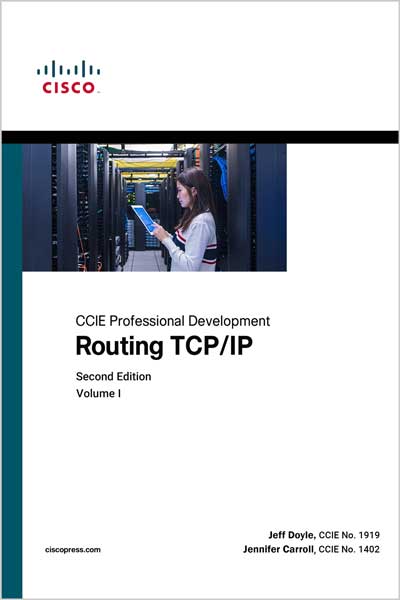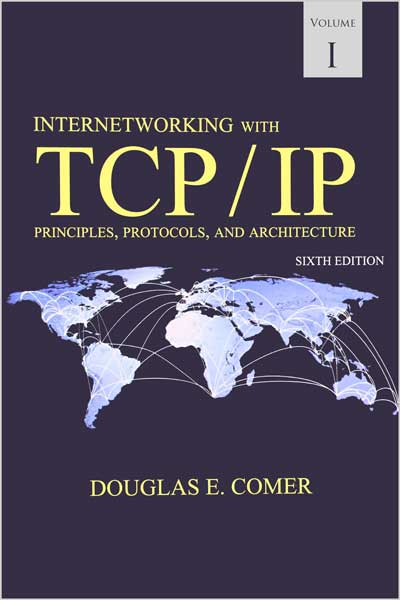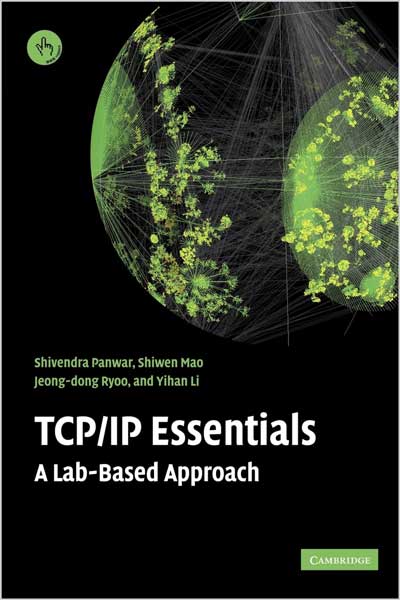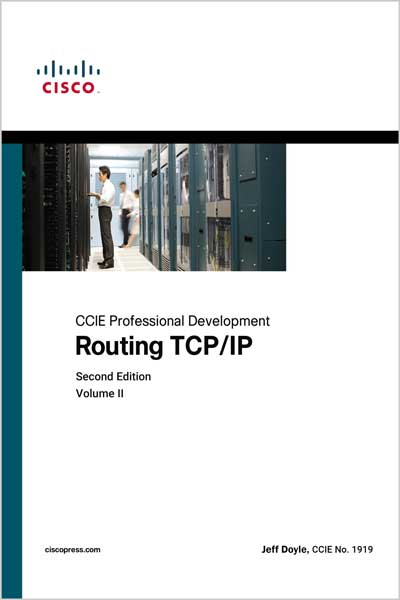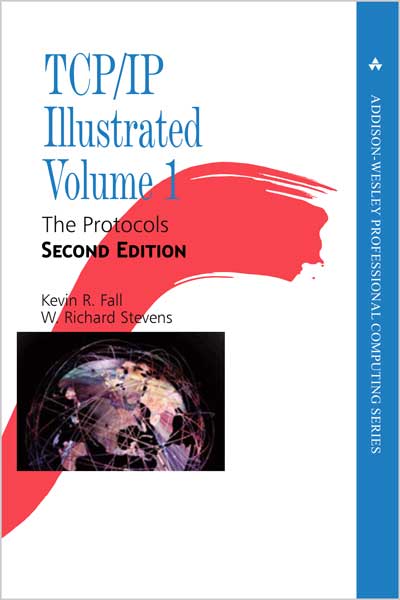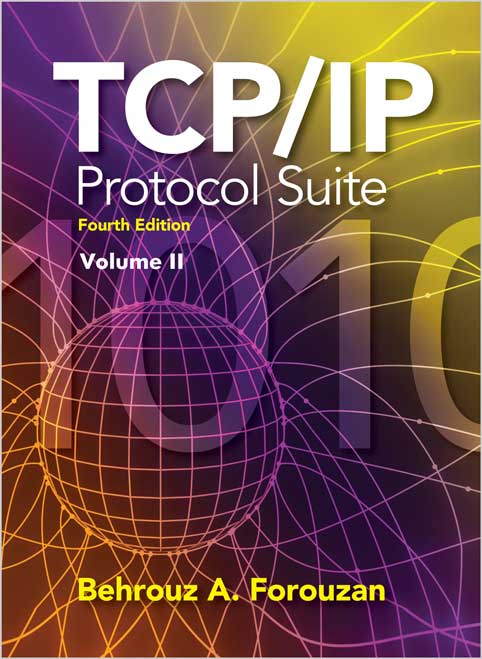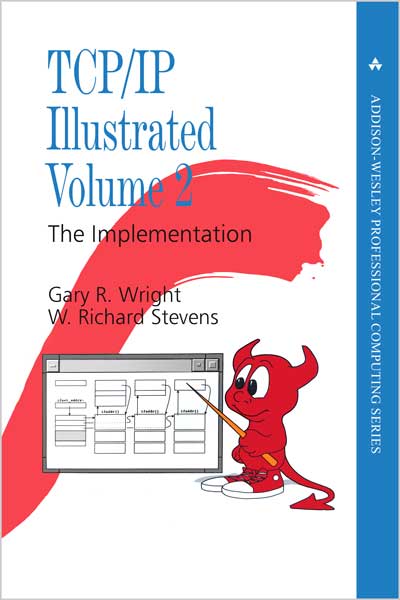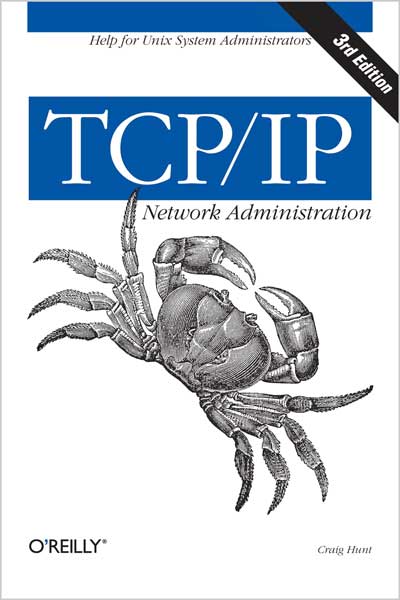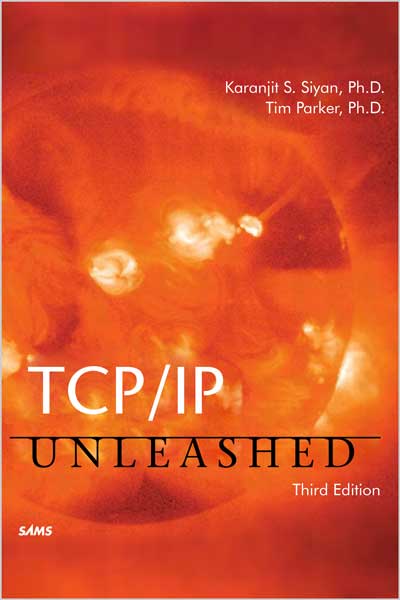A Comprehensive, Illustrated Internet Protocols Reference
Charles M. Kozierok
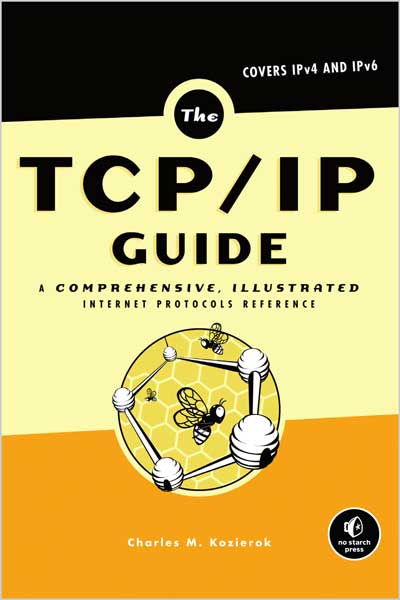
#TCP_IP
#HTTP
#NNTP
#SNMP
#SMTP
#FTP
#Telnet
#PPP
#ARP
#PPP
#ARP
#IP
#IPv6
#IP_NAT
#IPSec
#Mobile_IP
#ICMP
#RIP
#BGP
#TCP
#UDP
#DNS
#DHCP
From Charles M. Kozierok, the creator of the highly regarded www.pcguide.com, comes The TCP/IP Guide. This completely up-to-date, encyclopedic reference on the TCP/IP protocol suite will appeal to newcomers and the seasoned professional alike. Kozierok details the core protocols that make TCP/IP internetworks function and the most important classic TCP/IP applications, integrating IPv6 coverage throughout. Over 350 illustrations and hundreds of tables help to explain the finer points of this complex topic. The book’s personal, user-friendly writing style lets readers of all levels understand the dozens of protocols and technologies that run the Internet, with full coverage of PPP, ARP, IP, IPv6, IP NAT, IPSec, Mobile IP, ICMP, RIP, BGP, TCP, UDP, DNS, DHCP, SNMP, FTP, SMTP, NNTP, HTTP, Telnet, and much more.
The TCP/IP Guide is a must-have addition to the libraries of internetworking students, educators, networking professionals, and those working toward certification.
Table of Contents
Section I: TCP/IP Overview and Background Information
Part I-1: Networking Fundamentals
1. Networking Introduction, Characteristics, and Types
2. Network Performance Issues and Concepts
3. Network Standards and Standards Organizations
4. A Review of Data Representation and the Mathematics of Computing
Part I-2: The Open Systems Interconnection (OSI) Reference Model
5. General OSI Reference Model Issues and Concepts
6. OSI Reference Model Layers
7. OSI Reference Model Summary
Part I-3: TCP/IP Protocol Suite and Architecture
8. Chapter 8: TCP/IP Protocol Suite and Architecture
Section II: TCP/IP Lower-Layer Core Protocols
Part II-1: TCP/IP Network Interface Layer Protocols
9. TCP/IP Serial Line Internet Protocol (SLIP) and Point-to-Point Protocol (PPP) Overview and Fundamentals
10. PPP Core Protocols: Link Control, Network Control, and Authentication
11. PPP Feature Protocols
12. PPP Protocol Frame Formats
Part II-2: TCP/IP Network Interface/Internet Layer Connection Protocols
13. Address Resolution and the TCP/IP Address Resolution Protocol (ARP)
14. Reverse Address Resolution and the TCP/IP Reverse Address Resolution Protocol (RARP)
Part II-3: Internet Protocol Version 4 (IP/IPv4)
15. Internet Protocol Versions, Concepts, and Overview
16. IPv4 Addressing Concepts and Issues
17. Classful (Conventional) Addressing
18. IP Subnet Addressing (Subnetting) Concepts
19. IP Subnetting: Practical Subnet Design and Address Determination Example
20. IP Classless Addressing: Classless Inter-Domain Routing (CIDR)/Supernetting
21. Internet Protocol Datagram Encapsulation and Formatting
22. IP Datagram Size, Fragmentation, and Reassembly
23. IP Routing and Multicasting
Part II-4: Internet Protocol Version 6 (IPv6)
24. IPv6 Overview, Changes, and Transition
25. IPv6 Addressing
26. IPv6 Datagram Encapsulation and Formatting
27. IPv6 Datagram Size, Fragmentation, Reassembly, and Routing
Part II-5: IP-Related Feature Protocols
28. IP Network Address Translation (NAT) Protocol
29. IP Security (IPsec) Protocols
30. Internet Protocol Mobility Support (Mobile IP)
Part II-6: IP Support Protocols
31. ICMP Concepts and General Operation
32. ICMPv4 Error Message Types and Formats
33. ICMPv4 Informational Message Types and Formats
34. ICMPv6 Error Message Types and Formats
35. ICMPv6 Informational Message Types and Formats
36. IPv6 Neighbor Discovery (ND) Protocol
Part II-7: TCP/IP Routing Protocols (Gateway Protocols)
37. Overview of Key Routing Protocol Concepts
38. Routing Information Protocol (RIP, RIP-2, and RIPng)
39. Open Shortest Path First (OSPF)
40. Border Gateway Protocol (BGP/BGP-4)
41. Other Routing Protocols
Part II-8: TCP/IP Interface Transport Layer Protocols
42. Overview and Comparison of TCP and UDP
43. TCP and UDP Addressing: Ports and Sockets
44. TCP/IP User Datagram Protocol (UDP)
45. TCP Overview, Functions, and Characteristics
46. Transmission Control Protocol (TCP) Fundamentals and General Operation
47. TCP Basic Operation: Connection Establishment, Management, and Termination
48. TCP Message Formatting and Data Transfer
49. TCP Reliability and Flow Control Features
Section III: TCP/IP Application Layer Protocols
Part III-1: Name Systems and TCP/IP Name Registration and Name Resolution
50. Name System Issues, Concepts, and Techniques
51. TCP/IP Name Systems Overview and the Host Table Name System
52. Domain Name System (DNS) Overview, Functions, and Characteristics
53. DNS Name Space, Architecture, and Terminology
54. DNS Name Registration, Public Administration, Zones, and Authorities
55. DNS Name Server Concepts and Operation
56. DNS Resolution Concepts and Resolver Operations
57. DNS Messaging and Message, Resource Record, and Master File Formats
Part III-2: Network File and Resource Sharing Protocols
58. Network File and Resource Sharing and the TCP/IP Network File System (NFS)
Part III-3: Host Configuration and TCP/IP Host Configuration Protocols
59. Host Configuration Concepts, Issues, and Motivation
60. TCP/IP Bootstrap Protocol (BOOTP)
61. DHCP Overview and Address Allocation Concepts
62. DHCP Configuration and Operation
63. DHCP Messaging, Message Types, and Formats
64. DHCP Client/Server Implementation, Features, and IPv6 Support
Part III-4: TCP/IP Network Management Framework and Protocols
65. TCP/IP Internet Standard Management Framework Overview
66. TCP/IP Structure of Management Information (SMI) and Management Information Bases (MIBs)
67. TCP/IP Simple Network Management Protocol (SNMP) Concepts and Operation
68. SNMP Protocol Messaging and Message Formats
69. TCP/IP Remote Network Monitoring (RMON)
Part III-5: TCP/IP Application Layer Addressing and Application Categories
70. TCP/IP Application Layer Addressing: Uniform Resource Identifiers, Locators, and Names (URIs, URLs, and URNs)
71. File and Message Transfer Overview and Application Categories
Part III-6: TCP/IP General File Transfer Protocols
72. File Transfer Protocol (FTP)
73. Trivial File Transfer Protocol (TFTP)
Part III-7: TCP/IP Electronic Mail System: Concept and Protocols
74. TCP/IP Electronic Mail System Overview and Concepts
75. TCP/IP Electronic Mail Addresses and Addressing
76. TCP/IP Electronic Mail Message Formats and Message Processing: RFC 822 and MIME
77. TCP/IP Electronic Mail Delivery Protocol: The Simple Mail Transfer Protocol (SMTP)
78. TCP/IP Electronic Mail Access and Retrieval Protocols and Methods
Part III-8: TCP/IP World Wide Web and the Hypertext Transfer Protocol (HTTP)
79. World Wide Web and Hypertext Overview and Concepts
80. HTTP General Operation and Connections
81. HTTP Messages, Methods, and Status Codes
82. HTTP Message Headers
83. HTTP Entities, Transfers, Coding Methods, and Content Management
84. HTTP Features, Capabilities, and Issues
Part III-9: Other File and Message Transfer Applications
85. Usenet (Network News) and the TCP/IP Network News Transfer Protocol (NNTP)
86. Gopher Protocol (Gopher)
Part III-10: Interactive and Administrative Utilities and Protocols
87. TCP/IP Interactive and Remote Application Protocols
88. TCP/IP Administration and Troubleshooting Utilities and Protocols
Review
"A New TCP/IP Classic. . . Keeps things interesting and flowing well enough that working one's way through. . . Actually entertaining instead of torture."
—Slashdot
"The most comprehensive guide to TCP/IP protocols we have ever come across. It also is the most readable. This is a book that will be staying on our shelves, and we highly recommend it."
—Network World
“This is a really well-done book, and well worth the price if you need up-to-date, easy-to-digest information about TCP/IP. I wish I'd written this puppy.”
—IBM’s developerWorks
“Nicely organized, from an introduction to networking through administration and troubleshooting, the book clearly explains each topic.”
—Library Journal
"I've never seen a book on this subject before to match this one . . . It's as close to indispensable as a printed work can get."
—NetPerformance.com
"The book is well-organized, well-illustrated, and has a conversational tone that makes it easy to read and learn even for networking novices."
—Windows Networking
"It's informative and easy to read, even when discussing rather nasty protocols, and when it covers something, it generally covers it quite completely."
—;login:
"Due to size, it may seem like this book is solely for students or engineers. However, The TCP/IP Guide is great for anyone and everyone as it can act both as a reference guide and a textbook."
—Linux Security
"The author does a great job of discussing the significance of the information he is presenting . . . Whereas some books seem to throw illustrations in simply to break up the text, this book adds just the right amount in the right places to make sure you understand."
—Linux Magazine
"Covers a great breadth and depth of information . . . an excellent reference." (4.5 out of 5 stars)
—About.com
"This is both an encyclopedic and comprehensible guide to the TCP/IP protocol suite that will appeal to newcomers and the seasoned professional."
—DominoPower Magazine
“Kozierok's description of IPv4 addressing is probably the clearest I have ever read. And his chapters about IP subnetting and classless addressing are masterful. If I ever teach communication protocols again, my lecture notes will owe a great deal to this book. . . I continue to be astounded that this much information, presented in a clear and entertaining fashion, is available for so little.”
—Kickstart News
“A mind-boggling contribution to understanding and applying TCP/IP protocols to network administration. . .This is a truly impressive work. . .comprehensive and readable.”
—JavaRanch
"This is the kind of reference book that might be worth reading cover to cover in spite of its bulk."
—Open.ITWorld.com
"This book is the Real Deal. . . If you've read as many bad IT books as I have, you will appreciate the mastery of Kozierok's achievement. His warmth and style don't smack you in the face at first, but keep reading, and you'll discover an IT brother."
—WatchGuard Wire
"Now I can retire all my other TCP/IP books I have gathering dust on my bookshelves... This book however may become timeless, because it not only talks about, but shows everything."
—MacCompanion
"Smartly illustrated, the book is easily navigated for both brief overviews of the subject matter and more in-depth study of TCP/IP-related topics... A welcome change from the information congestion common on the Information Superhighway."
—About This Particular Mac (ATPM)
"Focuses on the nuts and bolts of how the protocols work while maintaining an emphasis on the present state of the art (including extensive coverage of IPv6)."
—Book News
"A must-have addition to the libraries of internetworking students, educators, networking professionals, and those working toward certification."
—Golden Triangle PC Club
"Anything and everything you ever wanted to or needed to know about the ins and outs of the TCP/IP. . . you could not find a better, more comprehensive book on the subject. I would give it two thumbs up for sure."
—Cariboo Computer Magazine
About the Author
Charles M. Kozierok is the author and publisher of The PC Guide, an extensive online reference work on personal computers, as well as several other educational websites, including The TCP/IP Guide. He holds master’s degrees from MIT in management and in electrical engineering and computer science (EECS), and worked in various technical and managerial roles before dedicating himself full-time to writing and educational pursuits. He lives in rural Vermont with his wife and three sons.
